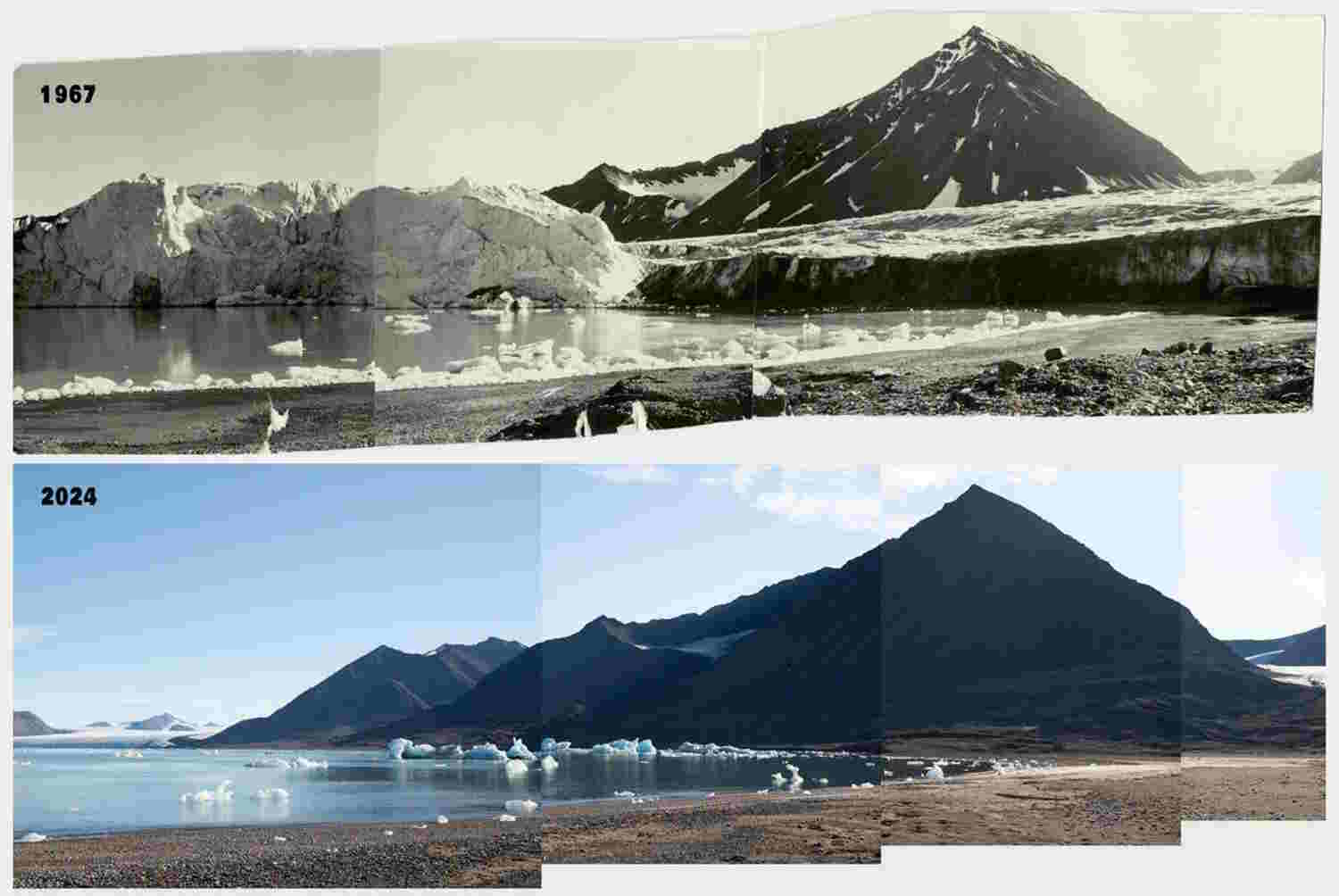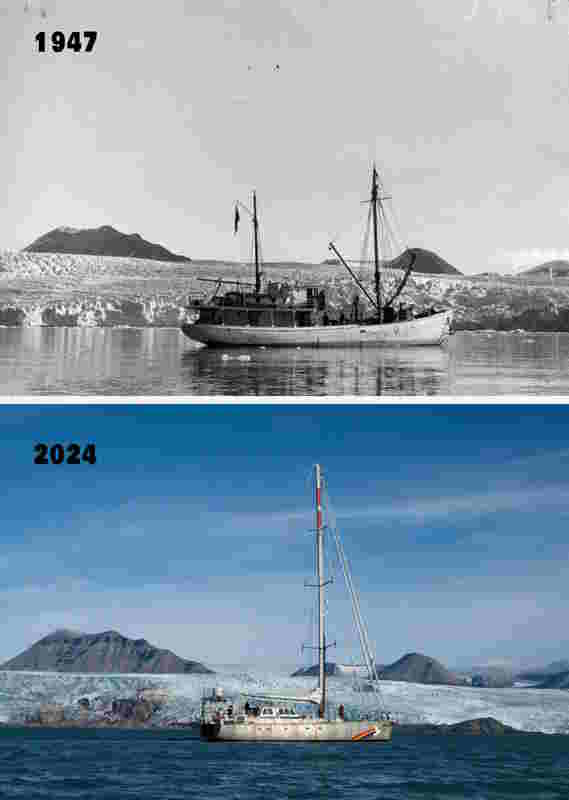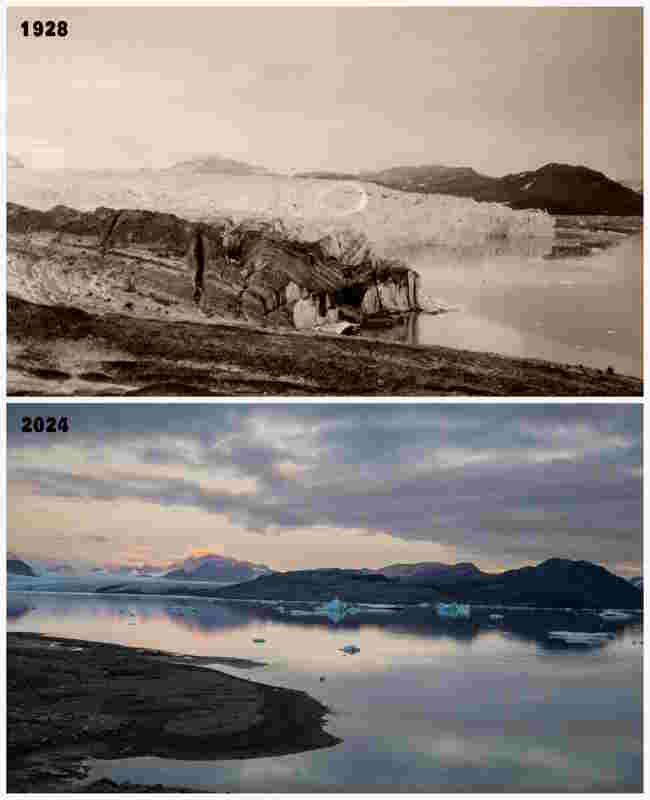His name is Christian Åslund and he was shocked by the difference between what he saw in 2002 and what he found himself faced with this summer. He, often commissioned by Greenpeace, has been working on a project since 2002: focusing on visual research of the Svalbard glaciers in the Arctic and documenting their retreat over time. A work that compares current images with archive photos from the Norwegian Polar Institute dating back to the early 1900s

Under the blinding sun of an archipelago above the Arctic Circle, the sight of what remains of a glacier can be nothing short of shocking. This was the case for photographer Christian Åslund, who last visited the area in 2002. Today, the ice has almost completely melted away.
Earlier this year, Christian boarded Greenpeace’s ship, The Witness, to revisit some of the glaciers he had first photographed in 2002. Over two decades ago, Greenpeace had asked Åslund to use photographs taken in the early 20th century and capture the same views to document the melting of the Svalbard glaciers due to global warming.
An unbelievable difference in ice density”
The results are breathtaking: the difference in ice density between the images, taken nearly a century apart, is staggering.
“In 2002, climate change wasn’t as widely recognized as it is now,” Åslund recalls. “Seeing all the glaciers, we really noticed the change over these past 22 years. There’s an enormous amount of glacial ice that has disappeared. It’s sad,” he adds, “especially when you’re holding the historic photo and can see the entire fjord filled by glaciers where they used to meet, and then you’re standing in the landscape where they’ve nearly vanished in those same fjords.”

@Christian Åslund
The Svalbard glaciers’ alarming rate of melting
This summer, the Svalbard glaciers melted at the fastest rate recorded. In just a single day, according to research by the University of Liège, the Svalbard glaciers released around 2.2 inches (55 mm) of water equivalent—five times the normal rate. If this particular chain of glaciers were to melt completely, sea levels would rise by about 0.7 inches (1.7 cm). Yet, what is most concerning is that the temperature has soared well above that of most other areas on Earth, warming by 7.2°F (4°C) in the last 30 years.
The comparison photos are so shocking that when they were first published in 2002, Åslund faced accusations of forgery. Given that climate deniers still exist, it’s not hard to understand why.

@Christian Åslund
@Christian Åslund
“This has been happening since 2002 when they were first released. People didn’t want to believe it,” Åslund says. “The photos were criticized as edited or taken in the wrong season, but a glacier isn’t affected that dramatically from one winter season to the next. It’s not like snow or ice that melts and returns.”
The takeaway
So, what’s the point? Why are people so unwilling to accept that this is real? Some remain set on ignoring the science and would rather believe it’s all fake. Unfortunately, recent policy changes in the United States under Trump’s leadership will likely do little to help address the climate emergency affecting every corner of the globe.
See all the images [here].
